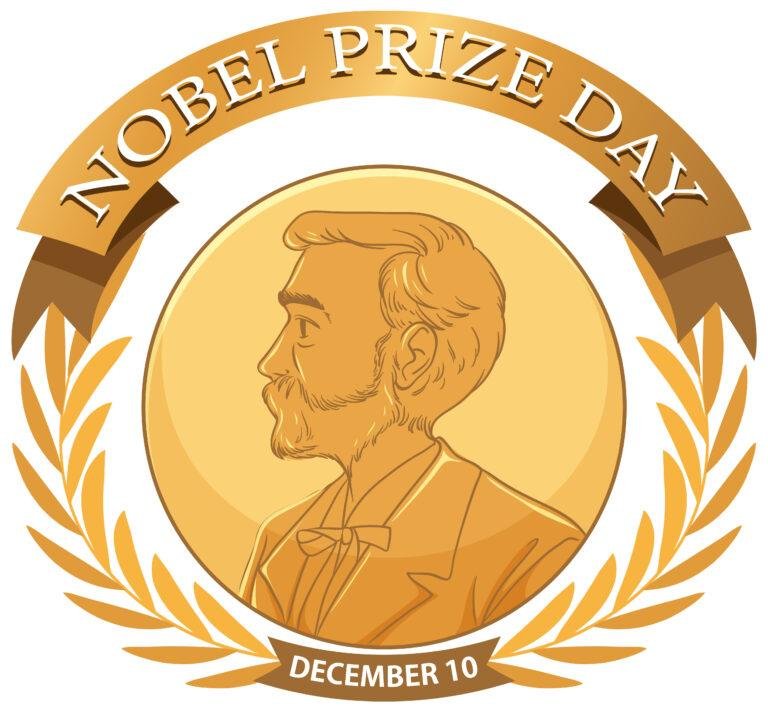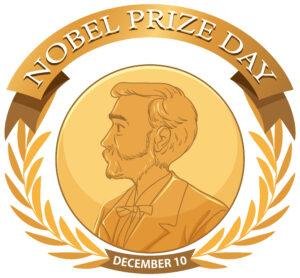Introduction
Join us in our latest episode as we dive into the exciting world of the Nobel Prizes. From the emotional impact on the winners to the fascinating science behind the laureates’ groundbreaking discoveries, we’ve got it all covered. Tune in to learn about this year’s extraordinary recipients and gain valuable insights into their remarkable work. Don’t miss out on our discussion about the process of awarding the Nobel Prizes and the upcoming award ceremonies.
Nobel Prize in Physiology and Medicine
The intricate processes within our cells involve the transfer of genetic information from DNA to messenger RNA (mRNA), serving as a crucial template for protein synthesis. In the 1980s, a groundbreaking method known as in vitro transcription emerged, allowing for the efficient production of mRNA without the need for cell culture. This pivotal advancement accelerated the progress of molecular biology across various disciplines. While the potential of mRNA technology for therapeutic and vaccine applications gained traction, significant obstacles stood in the way. The instability of in vitro transcribed mRNA and the challenges associated with its delivery demanded the development of sophisticated lipid systems to encapsulate the mRNA. Furthermore, the inflammatory reactions triggered by the in vitro-produced mRNA hindered the initial enthusiasm for its clinical use.
Undeterred by these challenges, Hungarian biochemist Katalin Karikó remained steadfast in her mission to harness mRNA for therapeutic purposes. Collaborating with immunologist Drew Weissman, they delved into understanding how different types of RNA interact with the immune system. Their groundbreaking discovery that chemical modifications in the bases of mRNA could diminish the unwanted inflammatory response marked a paradigm shift in the understanding of cellular recognition and response to various forms of mRNA.
Published in 2005, their seminal findings, along with subsequent studies in 2008 and 2010, demonstrated the profound impact of base modifications on both reducing inflammatory responses and enhancing protein production. This revelation laid the groundwork for the development of mRNA technology, setting the stage for the rapid creation of mRNA vaccines during the COVID-19 pandemic.
The impressive speed and adaptability of mRNA vaccines have not only yielded effective solutions against the SARS-CoV-2 virus but have also opened new avenues for combating other infectious diseases and potentially treating certain types of cancer. The profound contributions of this year’s Nobel laureates in elucidating the significance of base modifications in mRNA have played a pivotal role in the transformation of medical advancements, ultimately saving countless lives and ushering in a new era of mRNA-based therapies.
Nobel Prize in Chemistry
This year’s Nobel Laureates in Chemistry have orchestrated a groundbreaking feat, successfully manipulating particles to such minuscule dimensions that their properties are now governed by these elusive quantum effects. Termed as quantum dots, these particles have ushered in a new era in nanotechnology, opening the doors to a multitude of applications that were once confined to the realm of scientific imagination.
As Johan Åqvist, the Chair of the Nobel Committee for Chemistry, emphasizes, the allure of quantum dots lies in their diverse and mesmerizing properties. Notably, these particles exhibit an array of colors contingent upon their size, a testament to the extraordinary impact of quantum phenomena at the nanoscale.
While the theoretical underpinnings of size-dependent quantum effects in nanoparticles were acknowledged by physicists, the practical realization of sculpting matter at such minute scales seemed implausible. However, the groundbreaking efforts of visionaries like Aleksey Yekimov, who manifested quantum effects in colored glass through nanoparticles of copper chloride, and Louis Brus, who demonstrated size-dependent quantum effects in freely suspended particles, laid the crucial groundwork for this remarkable advancement.
The turning point arrived in 1993 when Moungi Bawendi revolutionized the chemical production of quantum dots, leading to the creation of nearly flawless particles indispensable for their practical utilization. These quantum dots now illuminate computer monitors and television screens through the innovative QLED technology, enhance the subtlety of light in LED lamps, and find applications in the realms of biochemistry and medical diagnostics, facilitating the precise mapping of biological tissue.
Indeed, the potential of quantum dots appears boundless, poised to revolutionize flexible electronics, drive the development of ultra-sensitive sensors, facilitate the creation of thinner and more efficient solar cells, and even revolutionize encrypted quantum communication. As we continue to explore the vast possibilities embedded within these diminutive yet potent particles, it becomes increasingly clear that quantum dots are set to play an indispensable role in shaping the future of technology and scientific discovery.
Nobel Prize in Physics
In the world of scientific exploration, the realm of electrons remains an enigmatic and swift one, where events unfold at an astonishingly rapid pace. Just like the seamless flow of frames in a movie, the movement of these events can often blur into each other, challenging our conventional perception of time. However, to capture and comprehend these fleeting occurrences, cutting-edge technology is imperative. Enter the revolutionary field of attosecond physics, where time is measured in unimaginably tiny increments. The recent Nobel Prize in Physics has shed light on the groundbreaking contributions of Anne L’Huillier, Pierre Agostini, and Ferenc Krausz, whose pioneering work has unlocked the door to a previously inaccessible realm of electron dynamics.
Back in 1987, Anne L’Huillier’s discovery of multiple light overtones during the transmission of infrared laser light through a noble gas marked the beginning of a journey into the intricacies of attosecond physics. By interacting with the atoms in the gas, the laser light induced various overtones, each representing a specific number of cycles within the light. Subsequent experiments, such as Pierre Agostini’s consecutive 250-attosecond light pulses and Ferenc Krausz’s isolation of a single 650-attosecond pulse, have further propelled the field forward.
Eva Olsson, Chair of the Nobel Committee for Physics, highlights the significance of these advancements, emphasizing how attosecond physics has the potential to unravel the mechanisms governed by electrons, thereby enabling a deeper understanding of their behavior. With the ability to delve into this microcosm, a multitude of practical applications emerges. From gaining insights into the behavior of electrons in materials for electronics to the potential use of attosecond pulses in medical diagnostics, the implications of this research are far-reaching and promising. As we step into this new era of attosecond physics, the prospects for unraveling the mysteries of the subatomic world seem more tangible than ever before.
Nobel Prize in Literature
Jon Fosse, the celebrated Norwegian writer, has left an indelible mark on the literary world with his rich repertoire spanning a diverse array of genres. Born in 1959 in Haugesund on the Norwegian west coast, Fosse’s impressive body of work, predominantly in Nynorsk, includes an extensive collection of plays, novels, poetry, essays, children’s books, and translations. While renowned for his plays, which have gained global acclaim, Fosse has garnered increasing recognition for his prose, showcasing his prowess in addressing profound human experiences with a rare emotional depth.
His debut novel, Raudt, svart (1983), tackled the sensitive theme of suicide, setting the stage for his subsequent literary endeavors. Fosse’s unique narrative style, characterized by a minimalist approach and a profound exploration of human emotions, has earned him accolades as a major innovator in contemporary theatre. Throughout his career, Fosse has artfully blended strong local ties with modernist artistic techniques, drawing inspiration from literary giants such as Samuel Beckett, Thomas Bernhard, and Georg Trakl.
Fosse’s distinct narrative style, often referred to as “Fosse minimalism,” highlights the complexities of everyday life, encapsulating moments of uncertainty, anxiety, and vulnerability with poignant clarity. His ability to capture the essence of human experience through interrupted locutions, profound pauses, and unresolved tensions is a testament to his masterful storytelling.
Notable works such as the play Natta syng sine songar (1998; Nightsongs, 2002) and the novel Stengd gitar (1985) demonstrate Fosse’s unparalleled skill in portraying the intricacies of human emotions within the context of everyday situations, often blurring the lines between life and death. Fosse’s magnum opus, the Septology, comprising novels such as Det andre namnet (2019; The Other Name, 2020) and Eg er ein annan (2020; I is Another, 2020), delves into the complexities of identity, mortality, and the enigmatic interplay between life and death.
With a profound understanding of the human condition at the heart of his literary endeavors, Fosse continues to captivate audiences worldwide, reaffirming his position as a literary luminary of our time. His ability to infuse his works with haunting imagery and profound symbolism has elevated his status as a master storyteller, leaving an indelible mark on the world of literature. As his literary legacy continues to inspire readers and fellow writers alike, Jon Fosse remains an enduring figure in the contemporary literary landscape.
Nobel Peace Prize 2023
In September 2022, the tragic death of Mahsa Jina Amini, a young Kurdish woman in the custody of the Iranian morality police, sparked a nationwide outcry in Iran, leading to the largest anti-regime demonstrations since 1979. With the rallying cry “Woman – Life – Freedom,” hundreds of thousands of Iranians bravely protested against the regime’s pervasive brutality and oppression, demanding justice and dignity for all. Despite the peaceful nature of the protests, the response from the authorities was ruthless, resulting in the deaths of over 500 demonstrators and the injury of thousands more, many of whom were left blinded by rubber bullets. Amid the chaos, at least 20,000 individuals were detained, enduring the heavy hand of the regime’s oppressive measures.
The spirit of resilience embodied by the demonstrators finds a remarkable echo in the tireless efforts of Narges Mohammadi, a prominent advocate for human rights and equality in Iran. Throughout her career, Mohammadi has been an unwavering voice against the systematic discrimination and oppression faced by women in the country. Her advocacy extends to the fundamental right to live a dignified life, with a strong emphasis on the fight for freedom of expression and independence, challenging the oppressive rules that restrict women’s visibility and enforce restrictive dress codes.
Narges Mohammadi’s journey as an activist began in the 1990s, when she distinguished herself as a passionate advocate for women’s rights during her studies in physics. Despite facing multiple imprisonments and severe sentences for her work, Mohammadi remained steadfast in her commitment to supporting incarcerated activists and their families, advocating against the death penalty, and exposing the regime’s use of torture and sexual violence against political prisoners. Even from behind the bars of Evin prison in Tehran, Mohammadi continued to champion the cause, offering solidarity to fellow inmates and amplifying the voices of the ongoing protests, ensuring that the movement’s momentum remained undeterred.
Recognizing Mohammadi’s unwavering courage and dedication to the cause of human rights, freedom, and democracy in Iran, the Norwegian Nobel Committee awarded her the Nobel Peace Prize, underscoring the importance of her work in promoting social justice and equality. The award also serves as a tribute to the countless individuals who bravely stood against the oppressive policies of the theocratic regime, advocating for a world where equal rights prevail, in line with the vision of Alfred Nobel. As a testament to its enduring commitment, the Norwegian Nobel Committee continues to honor those whose tireless efforts pave the way for lasting peace and global harmony.
Conclusion
If you enjoyed this then consider checking out our episode on the 2023 Ig Noble prize as well.
Until next time !





